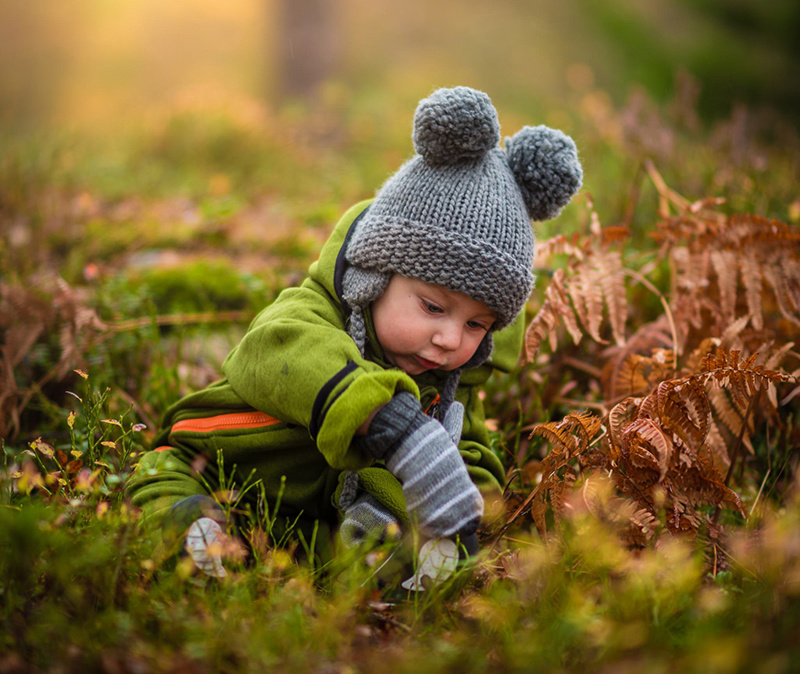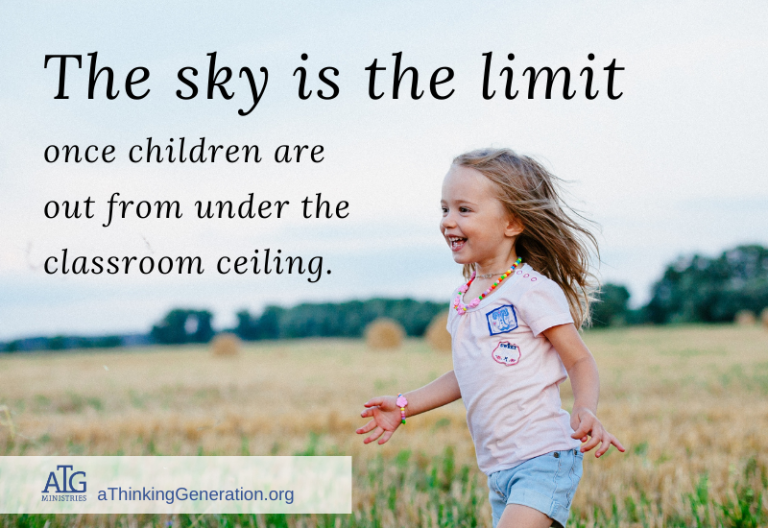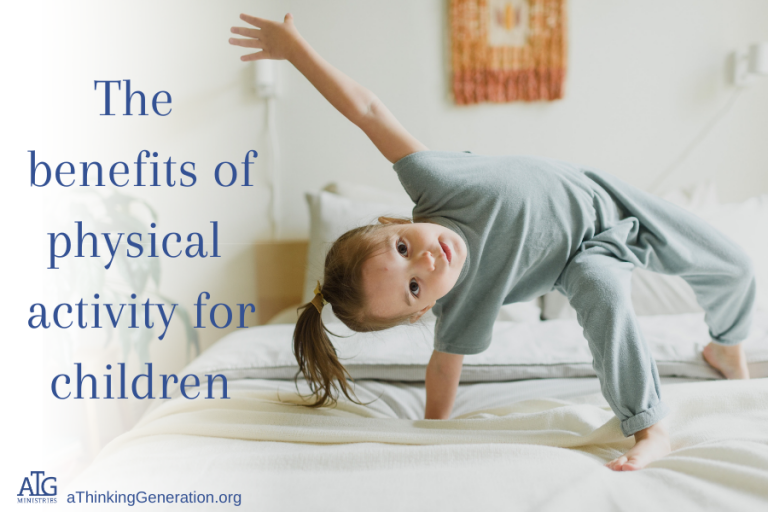Five Benefits of Nature for Children

Are you finding homeschooling to be stressful? Are the children struggling to sit still? Perhaps it’s time for a change of learning environment – a change from indoor to outdoor, from the artificial to the natural, from stale air to fresh air, and from the pages of a textbook to the living lessons of nature.
Research indicates we spend an average of 90% of our time indoors [1] – and presumably even more than that in many cases [2]. According to the Child Mind Institute, the average American child spends 4-7 minutes per day playing outside, and over seven hours per day in front of a screen [3].
Within the space of about 200 years, the western world have traded the outdoors-and-agriculture-based lifestyle for a classroom during childhood and an office during adulthood. Outdoor recreation has been largely replaced with indoors, screen-based entertainment. “From the year 1800 to 2000, we’ve gone from 90% of people working outside to less than 20%. In a very short space of time, we’ve gone from being an outdoor species to spending most of our time in dim, dark caves.”[4] – Dr Russell Foster, Head of the Nuffield Laboratory of Ophthalmology and the Sleep and Circadian Neuroscience Institute, University of Oxford
While the evolutionary tale that we descended from cavemen is not a true story, it does seem mankind is now volunteering to become cavemen as we pass our lives in dark rooms and cubicles while staring at a glowing screen.
The reality is that we were created to be outside. When God created man in His own image, He placed him in a garden, not in a building. Modern scientific research is telling us that that was just what was needed for optimal health and happiness.
Just five minutes in nature enough to help
A study in Environmental Science and Technology found that exercise out in nature significantly improved mental health, especially mood and self-esteem. They found that exercise near a body of water had the greatest effect. How much time in nature was needed for the positive effect? Just five minutes! It seems time in nature almost immediately lowers stress and improves mental health. The study did add, however, that “a full day of activity causes another spike in the level of benefit.” [5,6]
A walk in nature improves ADHD
A study in Journal of Attention Deficit Disorders found that walking in nature improved ADHD. [7] They found that students’ concentration was improved significantly more after a walk in the park than after a walk downtown or in a neighborhood.
Green playgrounds reduce stress
Many studies have found exposure to green environments reduces stress. A study in Health and Place[8,9] looked at the effect of wooded areas for play, outdoor classrooms, and gardening programs on a wide age-range of students from a variety of backgrounds. Ninety-eight percent of students reported positive effects! The most significant benefit found was a reduction of stress and anxiety. Students said they felt more calm, peaceful, and relaxed, and safe. Other benefits noted were a reduction of psychiatric symptoms, improved attention span, better social skills, and a general improvement of other mental-health measures.
Time in nature improves physical fitness
Did we really need a study to tell us this? Many studies (I won’t try to cite them all) have shown that children who have access to the great outdoors tend to have overall improved health and fitness.
Spiritual benefits
Perhaps most important of all are the spiritual benefits gained from spending time in nature. After all, nature is God’s handiwork – a lesson book designed to teach us of the Creator. Though defaced by sin, nature still contains the impress of its Author. We need not go to a book to learn of nature. To simply spend time in nature is to study this wonderful lesson book. The Teacher of the Eden school did not give Adam and Eve a book or a class about nature. He placed them in nature, and nature was the book. Just as did the students of the Eden school, we can still today learn from nature of the goodness, mercy, and love of God.
“So far as possible, let the child from his earliest years be placed where this wonderful lesson book shall be open before him. Let him behold the glorious scenes painted by the great Master Artist upon the shifting canvas of the heavens, let him become acquainted with the wonders of earth and sea, let him watch the unfolding mysteries of the changing seasons, and, in all His works, learn of the Creator. In no other way can the foundation of a true education be so firmly and surely laid.” – Education, 100
The few benefits of nature given in this article are but the tip of the iceberg. I’ll tell you about some more in future articles. So, what are you waiting for? Go outside with your children! Take walks in the forest, climb some trees, listen to the songs of the birds, or just lay in the grass and watch the clouds float by. In this environment, seek to lift the minds of your children to the Creator of all this beauty.
References:
1. Klepeis, N., Nelson, W., OTT, W. et al. The National Human Activity Pattern Survey (NHAPS): a resource for assessing exposure to environmental pollutants. J Expo Sci Environ Epidemiol 11, 231–252 (2001). https://doi.org/10.1038/sj.jea.7500165
2. https://www.statista.com/chart/21408/time-americans-spend-indoors-outdoors/
3. https://childmind.org/article/why-kids-need-to-spend-time-in-nature/
4. https://press.velux.com/future-generation-of-brits-faces-health-risks-from-life-indoors/
5. “Green exercise may be good for your head” Robin Mejia, Environmental Science & Technology 2010 44 (10), 3649-3649 DOI: 10.1021/es101129n
6. “What is the Best Dose of Nature and Green Exercise for Improving Mental Health?” A Multi-Study Analysis. Jo Barton and Jules Pretty, Environmental Science & Technology 2010 44 (10), 3947-3955 DOI: 10.1021/es903183r
7. Taylor, A. F., & Kuo, F. E. (2009). “Children with attention deficits concentrate better after walk in the park” Journal of Attention Disorders, 12(5), 402–409. https://doi.org/10.1177/1087054708323000
8. https://research.childrenandnature.org/research/green-schoolyards-as-havens-from-stress-and-resources-for-resilience-in-childhood-and-adolescence-2/
9. https://doi.org/10.1016/j.healthplace.2014.03.001







